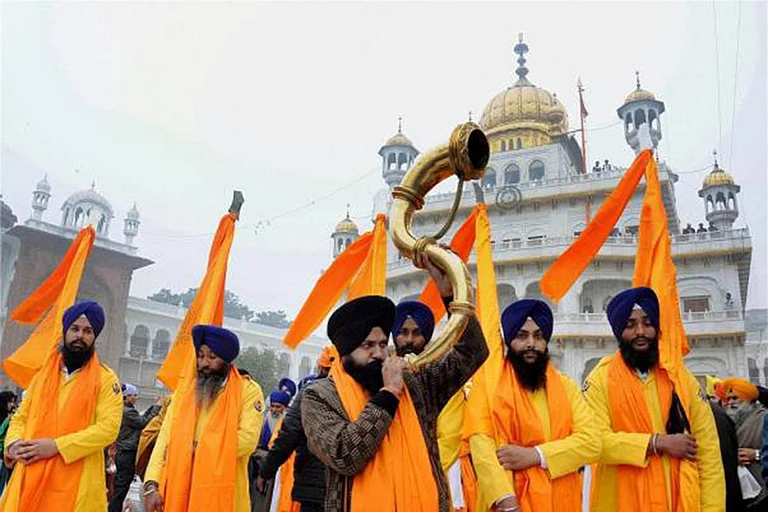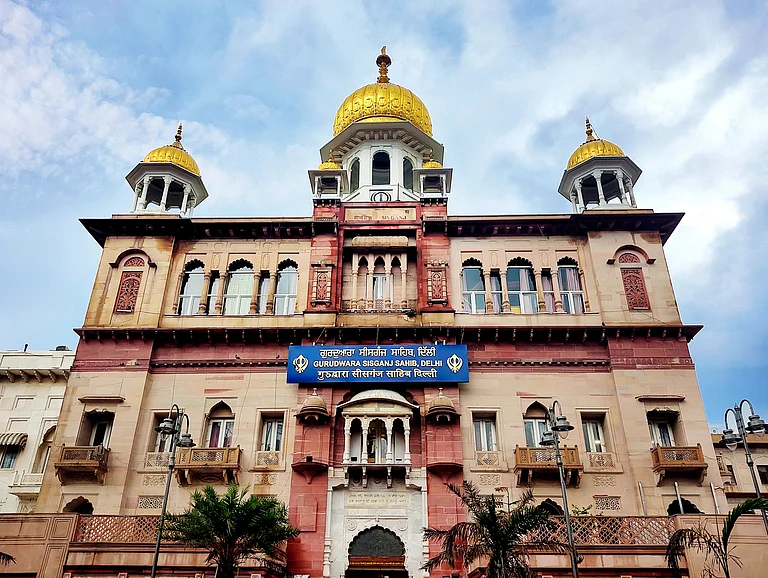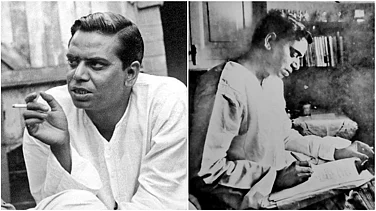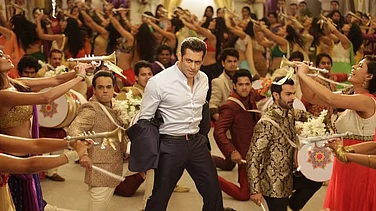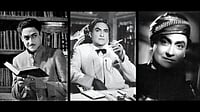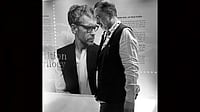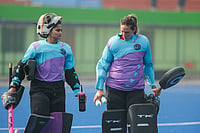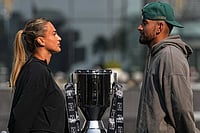It’s hard to imagine him as a doddering centenarian because Guru Dutt took his final curtain call when he was just 39. Yet, even after 61 years, the actor-filmmaker remains unforgettable, thanks to cult classics like Pyaasa (1957), Kaagaz Ke Phool (1959), Chaudhvin Ka Chand (1960) and Sahib Bibi Aur Ghulam (1962).
Sahib Bibi Aur Ghulam opened on July 29, 1962, two years before his untimely demise on October 10, 1964. It bagged the Rajat Kamal (President’s Silver Medal) for ‘Best Hindi Feature Film’, was India’s entry for the Academy Awards in the ‘Best Foreign Film’ category, and was nominated for the Golden Bear at the 13th Berlin International Film Festival. It also won four Filmfare awards, including ‘Best Actress’ for Meena Kumari, who plays the ‘bibi’ to Rehman’s sahib, with Guru Dutt as the ‘ghulam’.
Over six decades later, Geeta Dutt’s heartbreaking “Na jao saiyyan, chuda ke baiyyan” still haunts, echoing the despair and desperation of a devout Hindu housewife who, to keep her husband away from the kotha he frequents every night, commits the unforgivable transgression of becoming his drinking partner. Today, it is difficult to imagine any other actress as Chhoti Bahu, but the fact is, Guru Dutt had someone else in mind for the role and she was not an actress.

The search for Chhoti Bahu
“He was set on Chhaya Arya, "the film’s director, Abrar Alvi, had informed, way back in 1999. Chhaya was the wife of renowned photographer Jitendra Arya, who in 1948, had moved with his wife from Nairobi to London to pursue a career in photography. He photographed many Indians who visited his home and studio in Chiswick. Perhaps it was there that Guru Dutt met Chhaya. Having grown up in Calcutta (now Kolkata), and fascinated by its culture, he had long been taken by Bimal Mitra’s 1953 novel, Saheb Bibi Golam, and after his 1960 hit, Chaudhvin Ka Chand, decided to bring it to the screen. He was convinced that Chhaya would make a perfect Chhoti Bahu and coaxed the Aryas to move to Mumbai (then Bombay), where he did a photo session with her.
However, Abrar Alvi did not share his conviction when shown the photographs. “Chhaya was a beautiful girl with well-chiselled features, a very fair complexion and a good voice, but after rehearsing with her for a few days, I realised instinctively that she would not fit the role. I needed someone with a face that reflected the tragic heroine’s love for mankind, despite all the travails and trauma she had been through. Had Guru Dutt insisted, I was willing to go ahead with Chhaya, but eventually, he agreed with me,” he had shared.
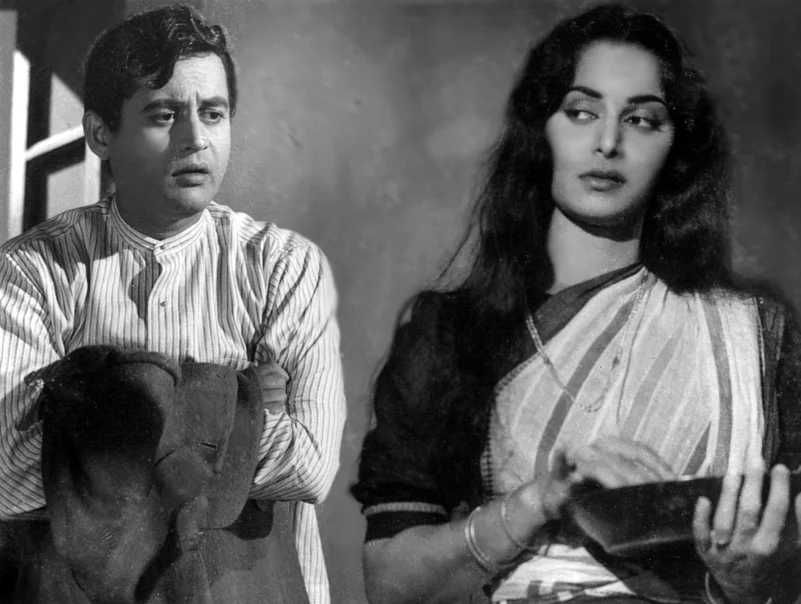
Chhaya went on to set up one of Mumbai’s earliest art galleries, the Chetana Crafts Centre, while Jitendra was the all-India chief photo editor of The Times of India from 1960 to 1985 and shot several stars and celebrities who graced the covers of Femina and Filmfare magazines. Among them was Meena Kumari, who reportedly had turned down the role when first approached because she was too busy, and might have lost it again, when her husband quoted too high a price.
In the interim, Waheeda Rehman had also done a photo-session with Guru Dutt’s cinematographer VK Murthy, dressed in a Bengali sari. The actress had impressed as Kamini, the vamp of CID, Pyaasa’s street-walker Gulabo, Bani Chaudhary, the murder suspect in 12 O’ Clock (1958), the filmmaker’s muse Shanti in Kaagaz Ke Phool and Jameela, torn between two friends in Chaudhvin Ka Chand. But this time, her mentor thought she looked too young and lacked the maturity to play this woman who will do anything for her husband’s love. Waheeda was eventually cast as Jaba, the daughter of the owner of the Mohini Sindoor factory where Bhootnath (Guru Dutt) is employed, who he later marries.
Meena Kumari had played Lalita in Bimal Roy’s 1953 directorial Parineeta, but lost Parvati aka Paro to Suchitra Sen in his Devdas (1955), based on another Bengali novel by Sarat Chandra Chattopadhyay. She was delighted to finally land Sahib Bibi Aur Ghulam, having always wanted to play a traditional Bengali bahu.

From book to screen
Bimal Mitra’s epic novel had earlier inspired a 1956 Bengali film, Saheb Bibi Golam, with Sumita Mukherjee as Chhoti Bahu, Nitish as Chhoto Babu, and Uttam Kumar as the Golam. After buying the rights to the book, Guru Dutt handed it over to Abrar Alvi to turn into a script, hoping to erase the losses of his last production, Kaagaz Ke Phool, whose box-office debacle had almost shut down Guru Dutt Films.
Alvi, who had been an integral part of his writing team through Aar-Paar (1954), Mr & Mrs ’55 (1955), Pyaasa, Kaagaz Ke Phool and Chaudhvin Ka Chand, however wasn’t confident he could pull off this responsibility. “I can’t read or write Bengali like you, so, how do I read the novel?” he protested. Guru Dutt responded by leasing a bungalow in Khandala and sending him there with the novelist himself. “We were accompanied by a cook and an assistant-cum- translator, Mukherjee, since I couldn’t speak a word of Bengali and Bimal babu wasn’t conversant in Hindi and not too fluent in English either.”
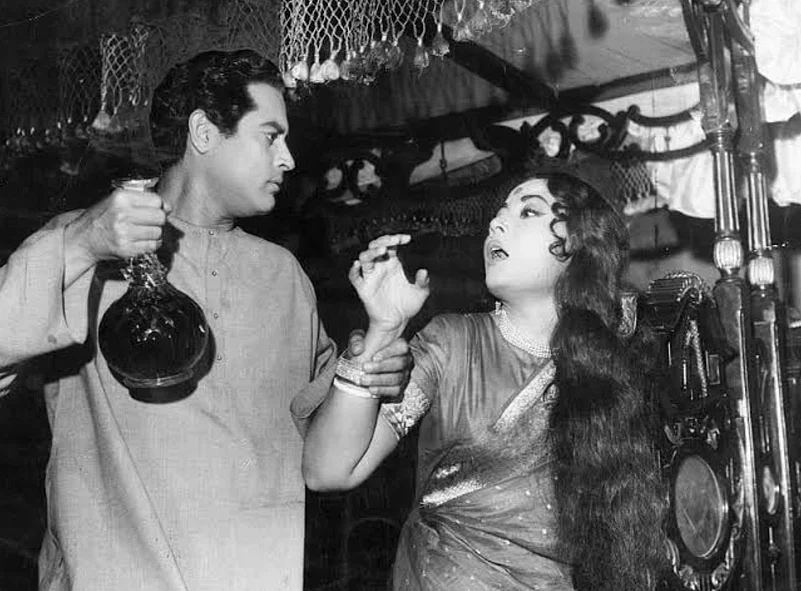
Six months later, he returned with a detailed 152-minute script which he expected Guru Dutt to direct. But it was six months before the film rolled, and by then his friend, embroiled in personal problems, wasn’t in the right frame of mind to pick up the reins. He took the film to Satyen Bose, who wanted to work with his own unit, which Guru Dutt refused to consider, given it would leave his staff jobless.
Then he got Alvi to narrate his script to another director, Nitin Bose. Then one evening, two-three weeks later, he suddenly dropped by his writer-friend’s place, and after a few pegs, suggested he direct the film himself. Alvi laughed off his offer, but when Guru Dutt renewed it at his office the next morning, he nodded his acceptance.
But despite Guru Dutt’s repeated assurances, Alvi admits he wasn’t confident of bringing his script alive on screen since he wasn’t a Bengali. This time Guru Dutt packed him off to Calcutta so he could familiarise himself with the culture and the language.

The Haveli that Meena Kumari never visited
The film was launched on January 1, 1961. The haveli of the Chaudharys, Alvi informs, was discovered by Guru Dutt’s Bengal distributor, Manna Ladia, during recce. It was so dilapidated that they had to travel every alternate day to Dhankuria from Calcutta’s magnificent Grand Hotel, where he was staying, to personally oversee its renovation, which took almost three months and extended to the garages for the carriages and the stable, before a unit of 70-80 moved in for the duration of the shoot.
Everyone except Meena Kumari—her portions were shot in an Andheri studio over a month-and-a-half schedule in Mumbai. Yet, the actress ‘lived’ the character to the point where, as we learn from Vinod Mehta’s book Meena Kumari: The Classic Biography (2013), she wrote in her diary that she was sick of Chhoti Bahu’s helplessness and her sorrow, her smiles and hopes, her tribulations and endurance. Ironically, the character became an extension of her when she too found it difficult to quit the bottle, despite her husband Kamal Amrohi’s pleas and died too early at the age of 38.
Roshmila Bhattacharya is a senior journalist and the author of four books on cinema.








